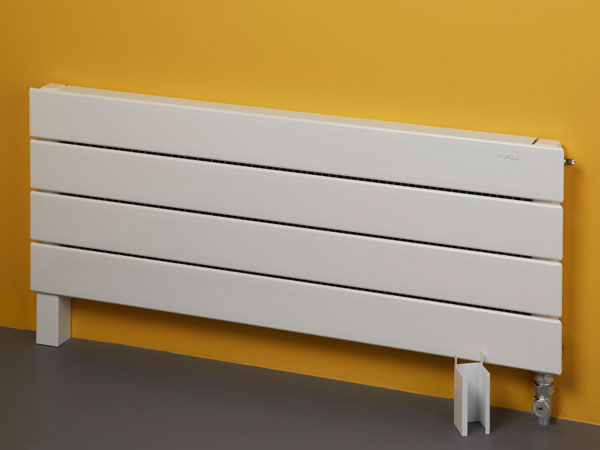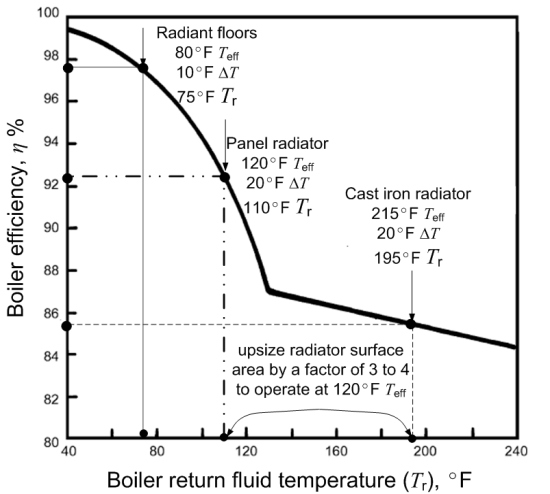

Everyone has probably heard at least one hundred or maybe a thousand light bulb jokes – the ones that disparage a class, gender, group, country, state, generation, etc. The point is to make fun of the group in question because changing a light bulb is so simple, but it takes several doofuses in the disparaged group to do it. Unfortunately, changing a light bulb is about the only energy retrofit measure that doesn’t get screwed up, usually. Is this all we are capable of?
In the past couple years, I have posted at least four Rants on energy code non-compliance:
- Building Energy Codes; A Blutonian D-
- Outcomes Rather than Energy Codes – One Piece at a Time
- Energy Code (non) Compliance; Could it be SATAN?
- Energy Code Compliance; Any Relationship to Performance?
In this Rant, I provide a classic example of a technology that would clearly beat code. But like code compliance itself, there is more to it than the view from the surface. For boilers, I have coined this term: test for show, ship for dough. I will come back to the meaning of this curious phrase, which parodies golf’s “Drive for show, putt for dough”.


A number of weeks back, I mentioned I had reviewed several evaluation papers under the broad umbrella of residential HVAC. The first one I discussed was Duct Leakage; The Results Are In. This time, I will be discussing a similar paper on condensing boilers and parallel findings of our own.
What is a condensing boiler? Some boilers generate steam as any rational person might guess. Other boilers also produce hot water at substantially lower temperatures than the conventional 212F boiling temperature. (Don’t be a wimp. Hang with the next couple sentences.) Each molecule of natural gas burned produces one molecule of CO2 and two molecules of H2O/water.
To maximize efficiency, we want to suck as much heat out of the exhaust as possible before dumping it outdoors. Once enough heat is sucked out, the H2O/water starts condensing to form liquid water. Therefore, a condensing boiler is considered an efficient boiler.
To enable sufficient heat transfer for condensing, boiler water temperature must be relatively low. Boiler efficiency is largely a function of water temperature. This is shown in the next interesting cartoon presented by Healthy Heating.
You should see where this is going by now. The evaluation findings for one state in New England demonstrated that condensing boilers are condensing in name only and not reality. They are installed and usually left to be controlled for a 140F return water temperature rather than something like 110F for the advertised efficiency. The difference is big. About half the savings are going out the exhaust flue, keeping the squirrels warm.
Why does this happen?
- Ignorance: possibly installers are not aware of performance curves as shown above.
- Expedience: demolish, remove, replace, connect, test, fire, and get out of there.
- Circumstance: as shown in the cartoon, if the home or building is fitted with classic cast-iron radiators, it just isn’t going to get there.
Another thing we found in our own evaluation work was that some manufacturers ship boilers with presets of 140F water temperature. So they claim 95% efficiency per energy code requirements, and when installed by a typical contractor, half the savings are achieved. “Test for show, ship for dough.”
Why ship for a high water temperature setting? Because this provides plenty of heat and short response times. No one wants to be cold, even for thirty seconds. Full blast solves this problem leaving the customer with 50% of projected savings. There is no need for this.
Possible solutions are many. Water temperature reset is one option. This would increase water temperature with falling outdoor temperatures, typically in linear fashion. For example, it might be set to 100F supply water temperature at 50F outdoor temperature and 150F at minus 20F.
What I would want would be a Nest-like app where I can control the water temperature manually. The app shows me the operating efficiency for my choices. How hard can this be?
What is more of a travesty is that this happens in new buildings. Any decent new construction program should require hot water systems to be designed for low water temperature. This simply requires more heat transfer area for baseboard heaters, like shown below, and in some forced air coils, like those in air handlers and fan coil units. Finally, test and verify operational performance!
Back to the evaluations of this technology: the screw-up scenario described here is the norm, not the exception. The programs missed almost half the savings.
This is one of the simpler, classic examples of what goes wrong when applying efficient equipment to buildings. Only a few hundred remain.
